
All categories
Featured selections
Trade Assurance
Buyer Central
Help Center
Get the app
Become a supplier

(16925 products available)




















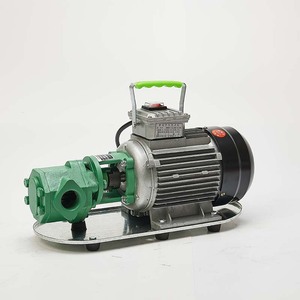
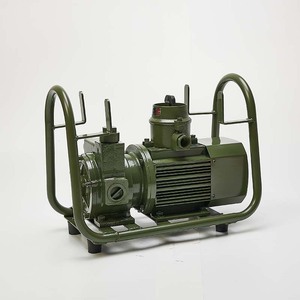
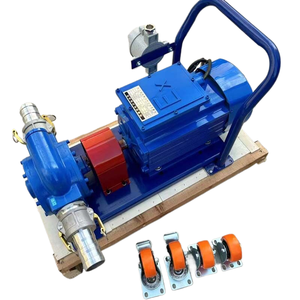
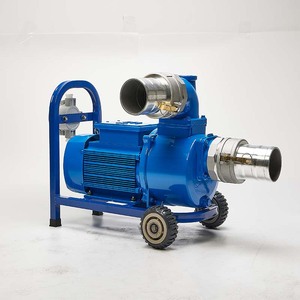
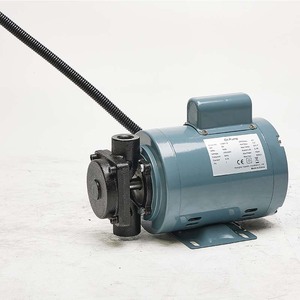
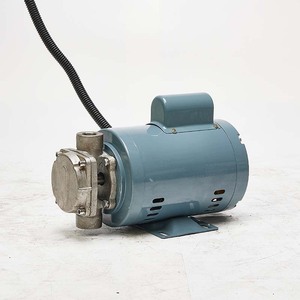

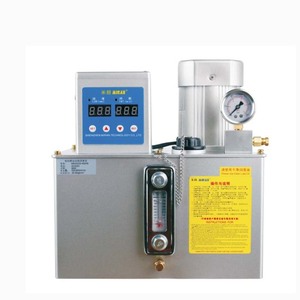















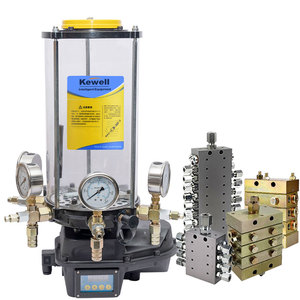





Electric oil and grease pumps serve up in different ways to suit loads of lubrication needs. Each type has its own strong points, making them ideal for a mix of uses. Here's a closer look at the main types:
These pumps use a diaphragm made from strong stuff to pump the grease. It's great at dealing with harsh chemical grease bases. The diaphragm creates a strong seal that stops the grease from leaking. This seal also makes sure no air gets in and messes with the grease flow.
Since they seal with a diaphragm, chemical pumps don't need any lubrication themselves. That makes them low maintenance. They can often handle grease at high temperatures. Their durable parts let them work well in hot environments. But, chemical diaphragm pumps can cost more thanks to the tough materials inside them. Even priming the pump can require expensive or difficult priming devices.
These pumps use a screw-like rotor to move the lubricant through a cavity. It's known for moving thick lubes easily. The way the rotor works makes it great at pumping dense greases. Different cavities can tackle a variety of grease consistencies.
Many of these cavity pumps also have heaters to help grease flow. The heater keeps the grease from getting too thick to pump. The heaters add extra expense and power drain, though. Some pumps even work with air compressors to create enough pressure. This can allow them to be portable in a pinch. Their main role is still providing lubrication on equipment.
These pumps use air power to push out the grease. They're renowned for being tough and working reliably. They get their airpower from compressors nearby. The compressors give the pumps the strength they need to keep working. This makes them very consistent.
Air-operated grease pumps are flexible, too. They can work with different lubes and greases. This lets them handle many lubrication jobs. While they can be heavy-duty, they do require a reliable air compressor close by. Without one, the pumps can't do their job. The pumps also need regular upkeep of the compressor. This goes to keep everything working smoothly and efficiently.
These pumps use electricity to move the grease through. Electric pumps are usually low in maintenance when compared to air-operated ones. They don't break down as often, either. This makes them easy to use at job sites. Some products even let people control the output amounts precisely. This gives users full control when lubricating parts.
Electric pumps also work well with small amounts of grease. This makes them suitable for lighter jobs. Powering them only requires plugging them in. This provides a reliable lubrication method without needing air or other resources to make power.
Electric pumps help businesses keep machines running. They deliver the right amount of grease to parts. This prevents wear and tear as the gears and hinges move. By reducing friction, electric pumps stop jams and slowdowns.
With less wear and tear, machines last longer. Companies don't need to replace them as often. So, in manufacturing, electric pumps keep production moving smoothly.
Electric pumps keep heavy machinery in good shape on job sites. They lube bulldozers, excavators, and more. This is crucial when these big machines face tough outdoor work. Pumps deal with wide temperature ranges and harsh conditions.
Electric pumps help machines handle dirt, dust, and the weather. All of this extends how long the equipment stays in good shape. Pumps cut down how often users have to do repairs or replace parts. That saves money and time on construction jobs.
Buses, trains, and trucks rely on electric pumps. They keep moving parts nicely lubed. This is crucial for braking systems, wheels, and other key parts. Regular lube helps vehicles handle trips smoothly. Electric pumps also ensure drivers don't have to stop and hand-lube vehicles. Many pumps let lubing happen automatically. Less hands-on lube means drivers stay focused on the road. Overall, pumps help transportation fleets run smoothly and reliably.
Farms use electric pumps to keep tractors and other ag machines running well. These pumps lube key parts as machines plow fields or harvest crops. Pumps also help machines handle tough fieldwork in heat, mud, or other elements.
Farming depends on reliable pumps to keep production moving. They cut down wear, so machines last longer. Farmers appreciate fewer repairs and less downtime. Electric pumps save money by extending the life of farm equipment.
Like land vehicles, boats rely on electric pumps for lube, too. Pumps keep boat engines and other moving parts smoothly lubed. This is vital for boats in both calm and rough waters. Pumps stand up to changing temps and sea conditions.
Electric pumps let boats lube up without stopping. This makes long journeys easier. Smart pumps also help boats meet regulations by ensuring proper lube levels. Overall, electric pumps support boat maintenance and legal needs.
Pressure power
Electric grease pumps deliver pressure to push out the grease. Most pumps handle pressures between 3,000 to 6,000 psi. High-pressure pumps deal with tougher grease jobs.
Flow
The flow rate shows how fast a pump works. Higher flow rates mean more grease in less time. Electric pumps usually have flow rates of 0.5 to 2 gallons per minute. That's good for small to medium jobs.
Grease capacity
Electric grease pumps hold a good amount of grease. Many have capacities of 12 to 50 ounces. Some larger models hold even more. Bigger capacities mean less need to refill the grease.
Power source
Most electric grease pumps get their power from batteries or standard outlets. Battery-powered pumps offer portability with a charge lasting several hours. Corded pumps plug into outlets for a steady power supply.
Construction materials
Electric grease pumps should be built with strong materials. Common parts use steel, aluminum, or reinforced plastic. These sturdy materials let the pump handle tough work without damage.
Pressure control
Some electric grease pumps come with pressure control. This feature lets workers adjust the pressure easily. It gives better control for different lubrication tasks.
Portability
Many electric grease pumps are made for moving. This is useful for getting into tight spaces. Some models even have wheels or handles to help carry them.
The pumps should be set up according to the instructions. This connects the power source and mixes the grease. Users then fill the reservoir with the lubrication needed. Users should attach the hose to the pump outlet and to the grease nib.
After this, they should turn on the pump. Electric pumps operate by switch or remote. This starts the flow of the grease. Users must then adjust any pressure settings, if needed. Finally, they monitor the job. Electric pumps deliver steady grease flow that users can watch to make sure things go right.
For upkeep, the pumps should be cleaned after each job. This removes old grease. Regular cleaning keeps the pump working well. Next, users need to check the hoses. They should look for cracks or wear and tear in the hoses. Damaged hoses stop the pump from working right.
After this, they should inspect the battery. They should look for corrosion or buildup on battery terminals. Dirty terminals stop power from getting to the pump. Users should check the battery each month. Knowing if it needs charging or replacing helps the pump work when needed.
Lastly, users should follow the manual for more checks. The manual lists each part to look at during maintenance. Regular checks catch little issues before they become larger ones. This keeps the pump reliable on the job.
Strong materials keep tools from breaking under pressure. Steel or aluminum parts handle tough jobs better than plastic ones. Users should check the pump's materials before buying. Stronger materials also help the pump resist rust and wear over time.
Good seals also stop leaks. Lubricant leaks waste resources and make jobs take longer. Seals made with rubber or other strong materials do not let as much lube escape.
As mentioned, leaks waste time and resources. Bad seals cause pumps to use more power, too. This may lead to larger utility bills. Checking seals cuts down on this wastage. This keeps costs down.
Some grease pumps make more noise than others. Loud pumps aren't as pleasant to use, after all. Noise levels will differ based on the pump type. For example, air-operated pumps are usually louder than electric ones. Users should check the dB ratings before getting a pump. Lower ratings mean less noise. Less noise means less stress for the workers.
Electric grease pumps often include pressure gauges. These show how much power the pump uses. Gauges let workers change settings if pressure gets too high or low. This protects both the pump and the gear it powers. Pumps without gauges may cause problems. Users should install one to avoid damaging parts from uneven pressure.
Grease pumps help parts last by spreading lube where needed. Applying grease stops wear on moving parts. This keeps machines running smoothly for many years. Users should be sure to follow all of the safety rules. Doing so ensures each pump works the way it should.
Electric oil grease lubrication pumps need upkeep to work well. Maintenance checks catch issues before they worsen. This helps tools stay strong, saving money on repairs down the line. Maintenance also keeps safety levels high. Knowing equipment works lowers the chance of accidents. Regular checks are a must to prevent wear and tear from leading to dangerous situations.
A1. An electric grease pump lubricates parts in machines. It pushes grease where needed to keep things running smoothly. This helps prevent wear and tear over time.
A2. Electric pumps use a motor to move the grease. The motor powers a piston, which pushes the lube out through a hose. This delivers the grease to parts quickly.
A3. Electric pumps save time and effort. They move more lube than hand pumping. They ensure an even application, which is good for each part. Some models also allow people to set amounts of grease, preventing waste.
A4. Pumps should be replaced if they wear out over time. If parts break, it may be easier to replace the pump than fix it. Major repairs, like a burned-out motor, may make it time for a new one.
A5. Yes, many are built with steel or other strong parts. These withstand dirt, dust, and water. They also handle extreme hot or cold temperatures well.